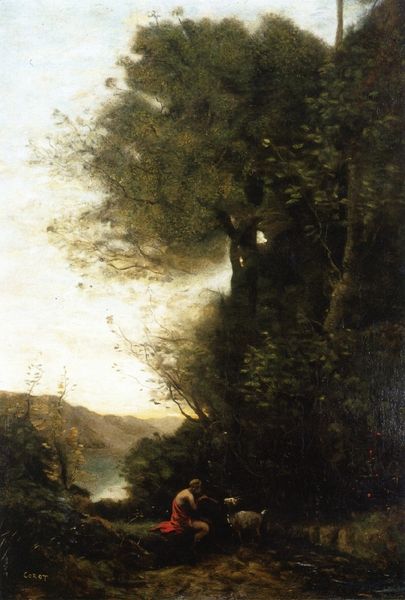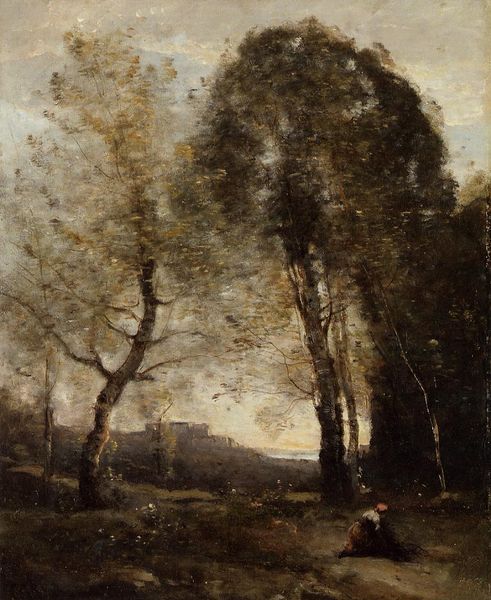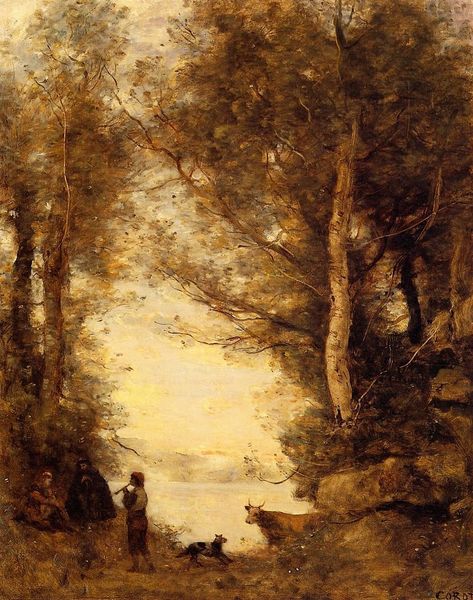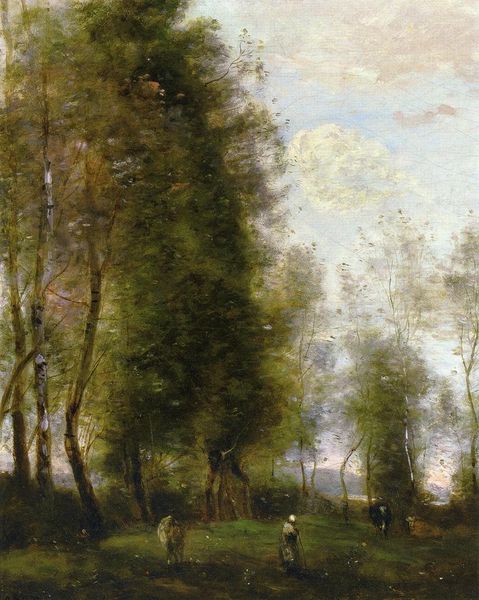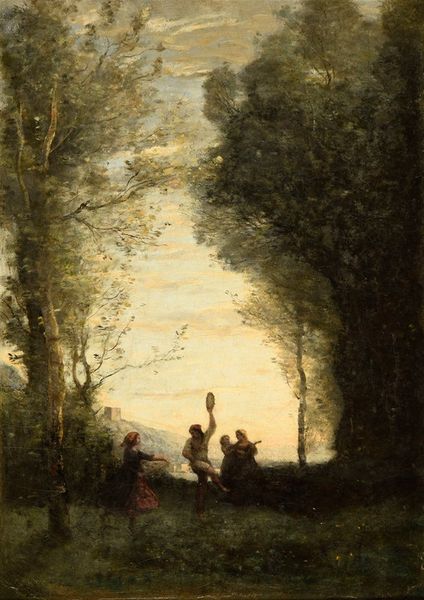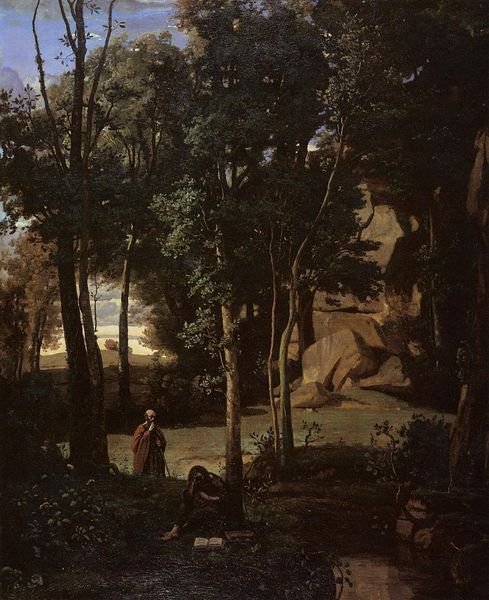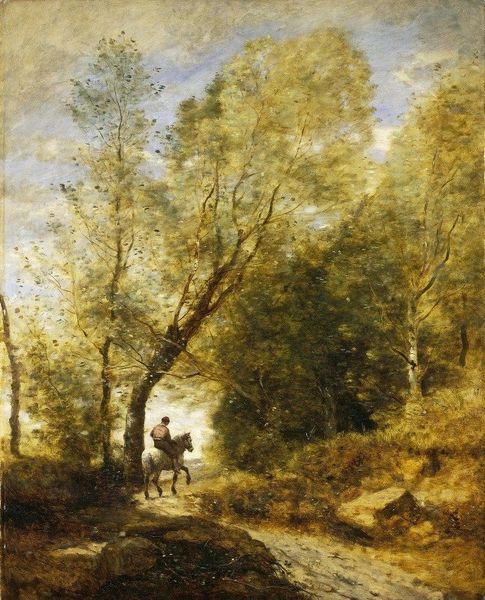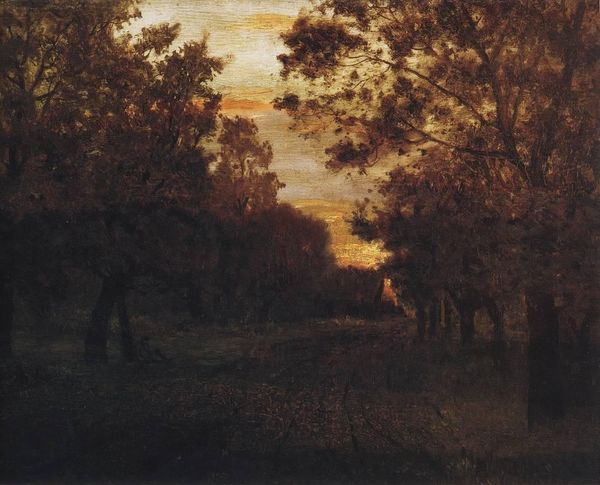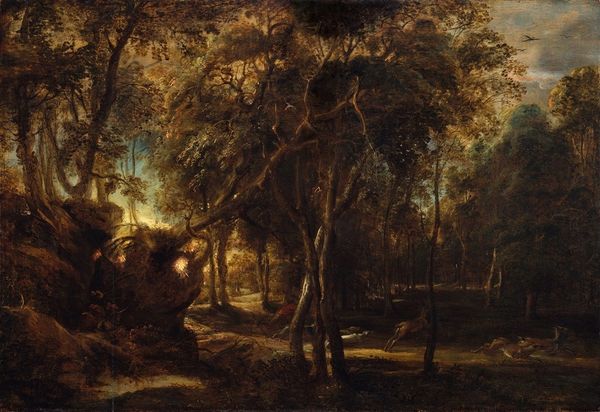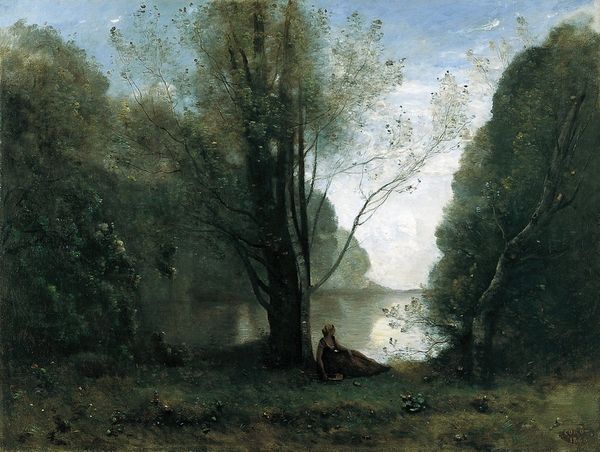
Saint Sebastian in a Landscape 1853
0:00
0:00
jeanbaptistecamillecorot
Walker Art Center, Minneapolis, MN, US
Copyright: Public domain
Editor: Here we have Corot's *Saint Sebastian in a Landscape*, painted in 1853. It's oil on canvas, and it strikes me as almost a stage set, with very deliberate placement of figures within this dramatic landscape. What story do you think the materials and composition are telling us? Curator: A materialist reading leads us to question the relationship between labor, faith, and aesthetics. Look at the paint handling. The landscape is rendered with a loose, almost sketch-like quality, which suggests a rapidity of execution, perhaps reflecting a shift towards industrial means. The figures, especially Sebastian, are more detailed. This juxtaposition creates a tension between the mass production of landscapes for market consumption, and the more "artisanal" depiction of the human figure, hinting at anxieties about de-skilling. Editor: So you're saying the *way* it's painted is as important as *what* is painted? I'm drawn to the angels floating above—almost like props lowered onto the "stage." Curator: Precisely! The landscape wasn’t just a backdrop. Corot used commercially available paints to capture this picturesque scene, mass-produced canvas that had been primed in advance – which provided for a different speed, a new method to approaching making. Where did these materials come from? How did that supply chain influence the scale and subjects of his work? It reflects the commodification of art materials as a direct influence to both production of painting and how it is read and consumed by its audience. Even the *choice* of Saint Sebastian, a popular subject easily marketable for religious buyers, plays into the larger capitalist forces. Editor: That completely changes my perception. The painting becomes less about religious piety and more about the means of production and distribution of art itself. Curator: Exactly! By examining the labor and materials, we unveil how even seemingly timeless themes are interwoven with specific social and economic conditions of their time.
Comments
No comments
Be the first to comment and join the conversation on the ultimate creative platform.

